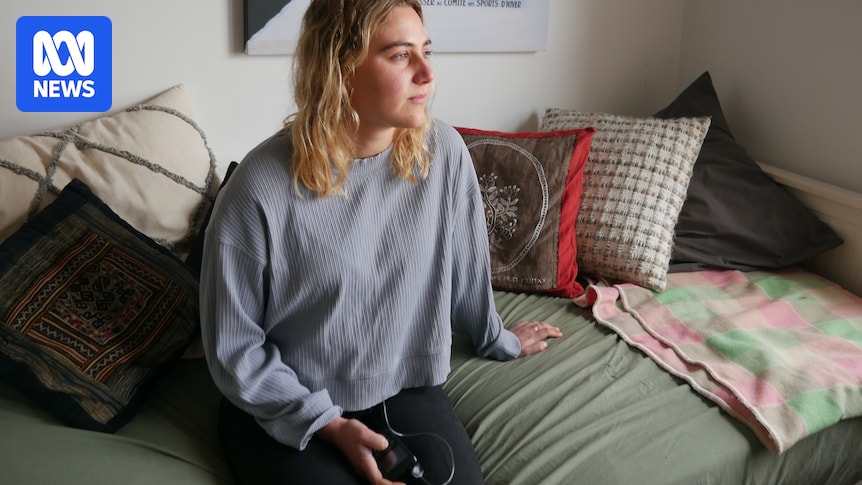
Sammy Haigh’s day begins with a series of complex calculations. “I get out of bed and work out how many grams of carbs I’m going to be eating for breakfast, then I put those carbs into my insulin pump, which will deliver my insulin to me,” she explained. The 26-year-old from Newcastle is one of the two million Australians living with diabetes, a condition that demands constant vigilance and financial expenditure.
Over the course of a year, Haigh spends nearly $5,000 on diabetes supplies, even after receiving subsidies from Medicare and Australia’s National Diabetes Services Scheme (NDSS). A parliamentary inquiry into diabetes last year recommended that the federal government make insulin pumps available at a low cost for all individuals with type 1 diabetes. Despite the report being released 12 months ago, the government has yet to respond to these recommendations.
Haigh’s insulin pump, a crucial tool for managing her condition, is not subsidised by the NDSS, leaving her to shoulder the financial burden of this lifelong, incurable autoimmune disease.
Financial Strain of Diabetes Management
As an early childhood educator, Ms. Haigh finds the cost of managing her diabetes to be substantial. “My diabetes is more than half of my rent,” she stated. “It totals, at the moment, between $400 to $500 a month.” These expenses encompass private health insurance, necessary to access an insulin pump, other diabetes technologies, and various medical appointments.
“These expenses are not just one-offs, but for critical equipment necessary to stay alive,” she added. “It’s on top of an already tight young-person budget, having to juggle increasingly higher rent costs, groceries, and fuel.” The financial pressure often forces her to choose between her health and other life priorities.
Insulin pumps, which are wearable devices that supply a continuous flow of insulin, are only subsidised for type 1 diabetes patients under the age of 21. “The cost of a pump is absolutely unaffordable for some people,” Haigh noted.
Diabetes at a Crisis Point
According to Diabetes Australia, the diabetes epidemic has reached a crisis point, with the disease costing the health system an estimated $9.1 billion annually. Professor David Simmons, an endocrinologist and Diabetes Australia’s chief medical officer, emphasized that increasing access to insulin pumps could reduce overall health system costs by maintaining stable blood glucose levels and preventing long-term complications.
“It does reduce the cost [for the health system] by reducing people who end up in intensive care units or on dialysis, for example,” he said.
Professor Simmons also pointed out that Australia is lagging behind other countries in subsidizing new diabetes technologies. “This is now seen as normal care, but sadly in Australia, it’s not being provided in the way that is happening in other countries,” he remarked. Countries like the United Kingdom and Canada already subsidize insulin pumps for people with type 1 diabetes.
Calls for Expanded Access
One of the recommendations from the 2023 inquiry was to expand access to continuous glucose monitors (CGMs) to type 2 diabetes patients, who currently do not receive government subsidies. Pete Holland, a man from Hunter Valley diagnosed with type 2 diabetes a decade ago, has experienced the benefits of a CGM through his daughter, who has type 1 diabetes. Despite finding the device a “game-changer” for managing his condition, he stopped using it due to the prohibitive cost.
“They’re a massive expense, they’re over $200 a month to be able to use these things,” Holland explained. “With the cost of living these days, I can’t afford to be paying that sort of stuff.”
Holland expressed hope for increased CGM subsidies, stating, “It’s a no-brainer for me to take a load off the health system and help anybody with diabetes at the same time.”
In response to these ongoing issues, a spokesperson for Federal Health Minister Mark Butler stated that the government is carefully considering the report from the diabetes inquiry. “The report shines a light on a serious public health issue affecting every community in Australia,” the statement noted.
Looking Ahead
The push for subsidizing insulin pumps and other diabetes technologies continues as advocates and patients await a government response. The outcome could significantly impact the financial and health-related burdens faced by millions of Australians living with diabetes. As the nation grapples with rising healthcare costs, the debate over equitable access to life-saving technologies remains a critical issue.







